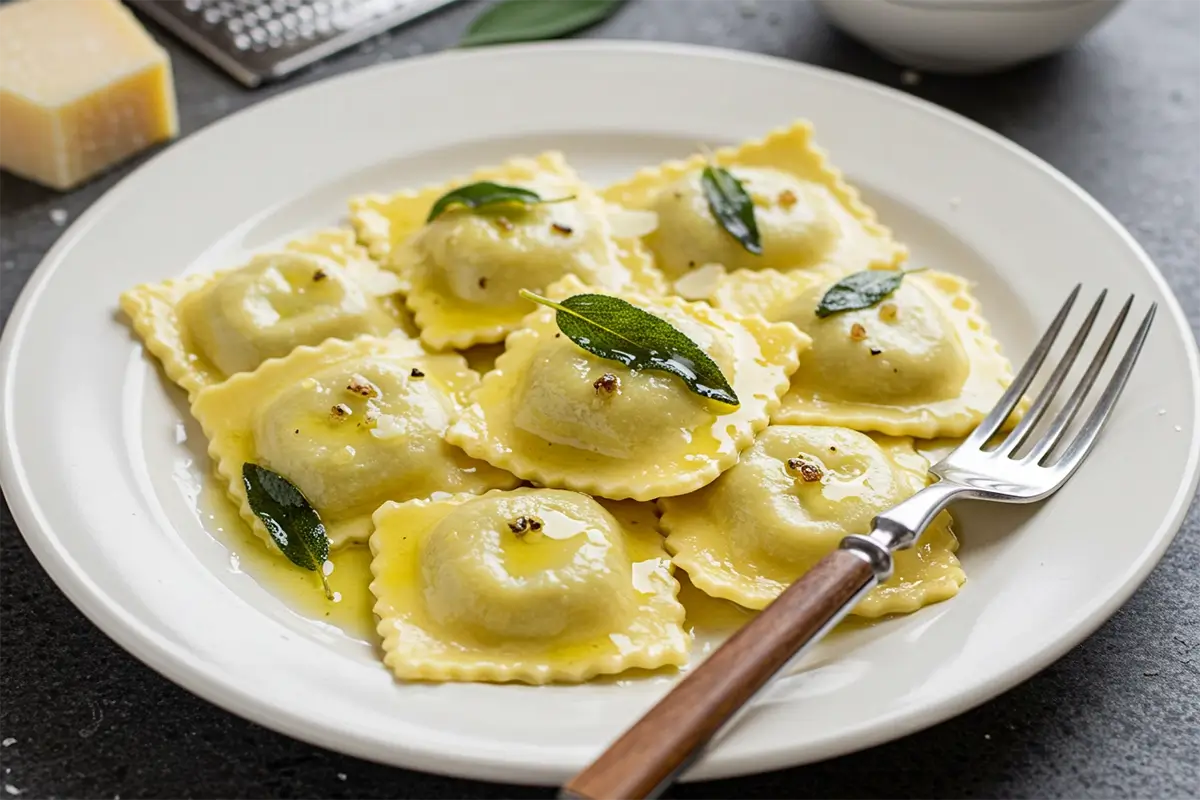Introduction: Bringing Back Ravioli to Your Kitchen
Craving the rich, indulgent flavors of ravioli but worried about gluten? You’re not alone. Ravioli has long been a staple of comfort food, but if you’re living a gluten free lifestyle, finding safe and delicious alternatives can be challenging. The good news? You can create gluten free ravioli at home that’s just as mouthwatering as the traditional kind – maybe even better.
This guide will take you through the entire process, from understanding the benefits of gluten free pasta to making your own dough, fillings, and sauces. By the end, you’ll have the confidence to craft gluten free ravioli that rivals anything you’ve ever tasted.
Table of Contents
Why Gluten Free Ravioli Deserves a Place in Your Kitchen
Understanding the Gluten Free Advantage
Switching to gluten free ravioli isn’t just about dietary restrictions – it’s about enhancing your overall well-being. Gluten free diets are known for reducing inflammation, boosting energy, and aiding digestion. But there’s more to it than just health.
Benefits of Gluten Free Ravioli:
- Gentler on Digestion – Gluten free options help you avoid bloating and discomfort.
- Nutrient-Rich Flours – Almond, chickpea, and quinoa flours add protein and fiber.
- Flavor Variety – Gluten free pasta allows you to experiment with new, exciting flavors.
Ingredients You Need for Gluten Free Ravioli
Building Blocks of Perfect Ravioli Dough
Crafting gluten free ravioli starts with quality ingredients. The right flour blend makes all the difference, ensuring your pasta has the perfect texture – tender, but firm enough to hold its filling.
| Ingredient | Quantity | Why It’s Important |
|---|---|---|
| Gluten free flour blend | 2 cups | The foundation – look for one with xanthan gum |
| Eggs | 2 large | Adds structure and richness |
| Olive oil | 1 tbsp | Prevents the dough from drying out |
| Water | 3-4 tbsp | Ensures smooth, pliable dough |
| Xanthan gum (if needed) | 1 tsp | Mimics gluten elasticity |
| Rice or almond flour | For dusting | Keeps pasta from sticking during rolling |
Step-by-Step Guide to Making Gluten Free Ravioli
Crafting the Dough from Scratch
Making gluten free dough might sound intimidating, but it’s easier than you think. With the right techniques, you can roll out smooth, elastic dough that’s perfect for ravioli.
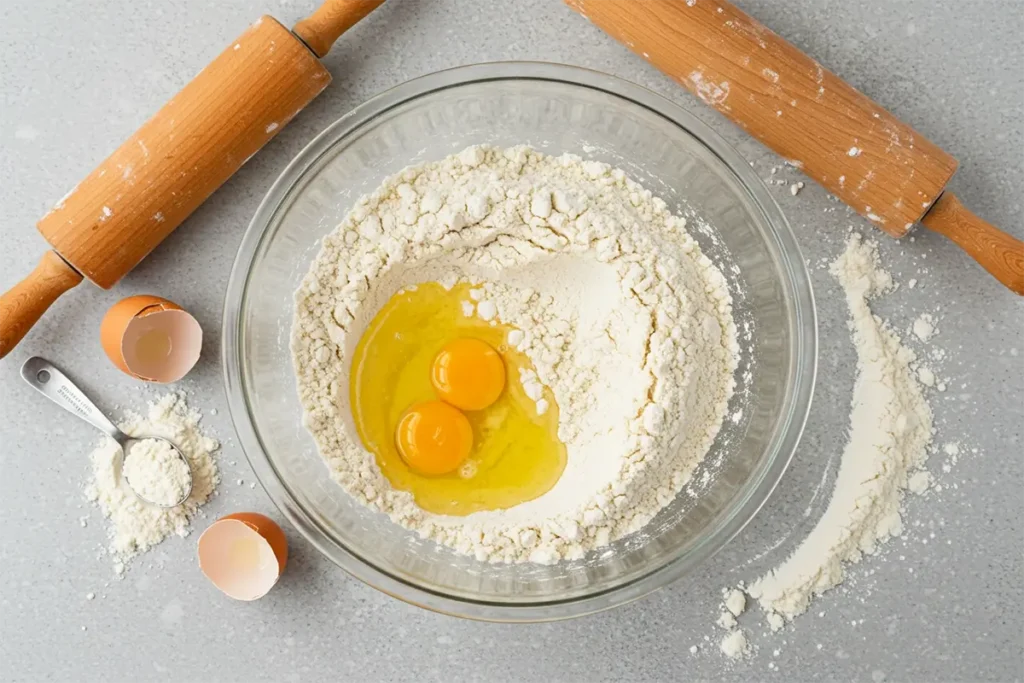
Step 1: Mix the Dry Ingredients
- Combine your gluten free flour and xanthan gum in a bowl.
Step 2: Create the Dough
- Make a well in the center of the flour and crack in your eggs.
- Slowly incorporate the flour, adding olive oil and water as needed.
Step 3: Knead and Rest

- Knead the dough for about 5-7 minutes until it feels smooth and pliable.
- Wrap it in plastic and let it rest at room temperature for 30 minutes.
Crafting the Perfect Filling
Your ravioli filling is where you can really let your creativity shine. From classic ricotta to inventive plant-based options, there’s no limit to what you can tuck inside.
Popular Filling Ideas:
- Ricotta and Spinach – A timeless classic with creamy, rich flavor.
- Mushroom and Garlic – Earthy, aromatic, and perfect for fall.
- Butternut Squash – Sweet, nutty, and ideal for a twist on tradition.
- Vegan Cashew Cheese – Dairy-free, but still incredibly creamy.
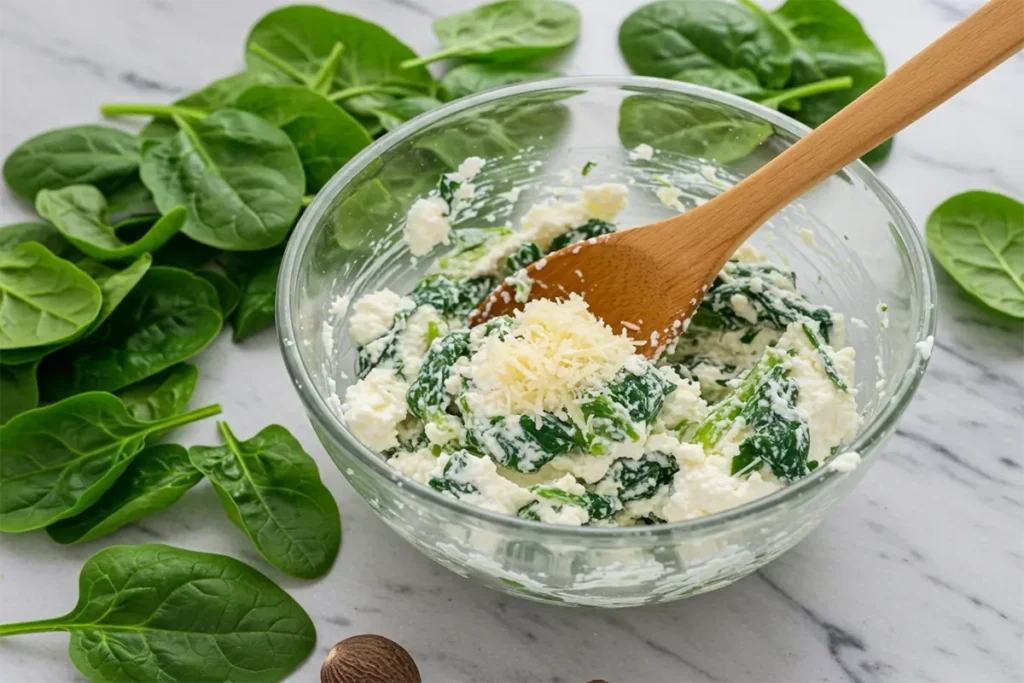
Step 1: Prepare the Filling
- Mix ricotta with grated Parmesan, sautéed spinach, and a pinch of nutmeg.
- Season to taste with salt and pepper.
Assembling and Cooking Gluten Free Ravioli
The Art of Ravioli Assembly

- Roll Out the Dough – Use a rolling pin to flatten the dough to about 1/8 inch thick.
- Add the Filling – Spoon small dollops of filling along one sheet of pasta, spacing them evenly.
- Seal the Ravioli – Cover with a second sheet of dough and press around each mound to remove air.
- Cut and Shape – Use a ravioli cutter or knife to cut into squares or circles.
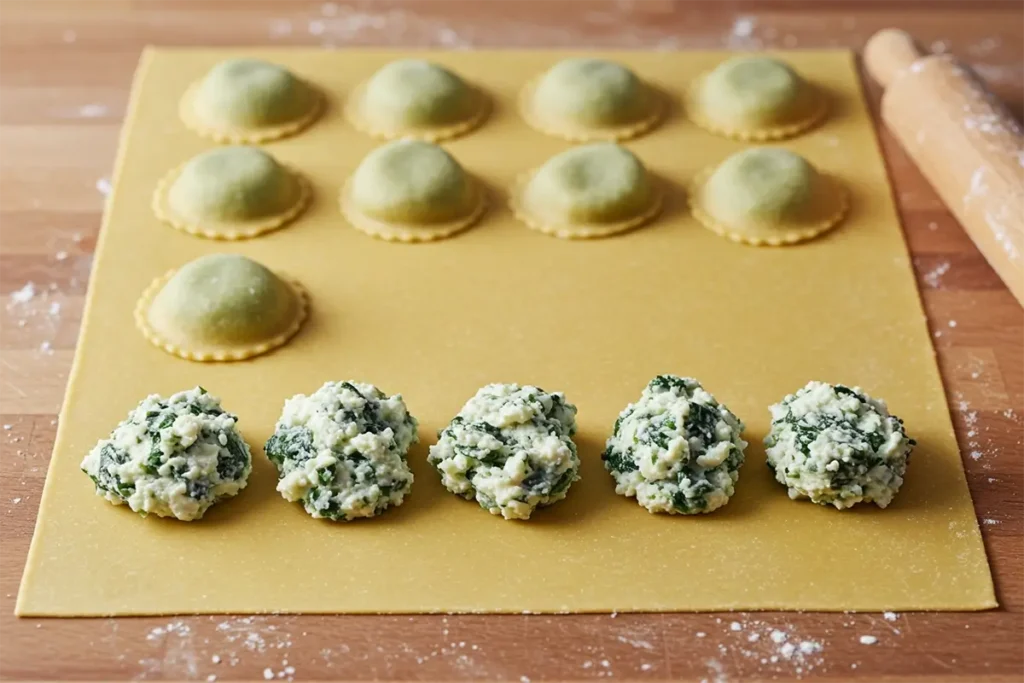
Boiling to Perfection
- Bring salted water to a simmer.
- Cook the ravioli in batches for no more than 4 minutes, until they float to the surface.
- Drain well and serve with your favorite sauce.
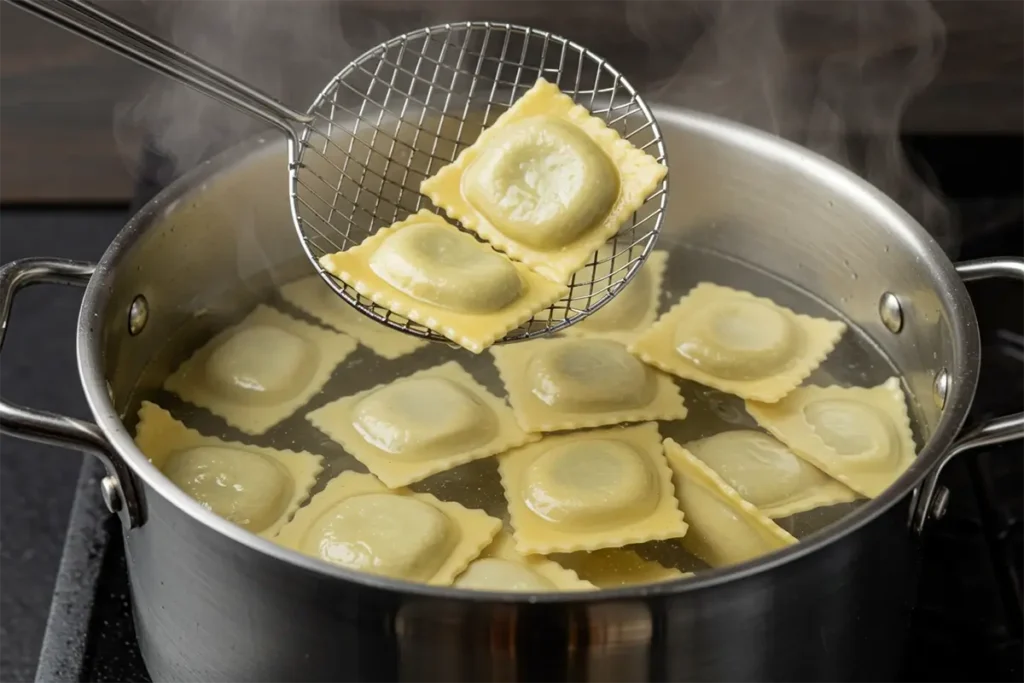
Best Sauces to Pair with Gluten Free Ravioli
Flavor Combinations That Elevate Your Dish
- Marinara Sauce – Bright and tangy, perfect for a classic feel.
- Brown Butter and Sage – Nutty, rich, and beautifully aromatic.
- Lemon and Garlic Butter – Light, fresh, and zesty.
- Creamy Alfredo – Decadent and perfect for heartier fillings.

Store-Bought Gluten Free Ravioli Options
Quick and Delicious Brands to Try
Don’t have time to make ravioli from scratch? No problem. Many brands offer fantastic gluten free ravioli that are just as good as homemade.
- Cappello’s – Made with almond flour, offering a rich, gourmet experience.
- Taste Republic – Fresh gluten free pasta with excellent texture and flavor.
- Jovial Foods – Organic, non-GMO, and reminiscent of traditional Italian pasta.
Troubleshooting and Expert Tips
Common Gluten Free Pasta Pitfalls And How to Avoid Them
- Dough Cracks Easily – Add a bit more water to the dough.
- Sticky Dough – Dust your surface with rice or almond flour.
- Filling Leaks Out – Ensure the edges are sealed tightly.
How to Cook Frozen Gluten Free Ravioli
Frozen gluten free ravioli can be a lifesaver when you’re craving a quick, delicious meal without the hassle of making pasta from scratch. The key to perfectly cooking frozen ravioli lies in gentle handling to preserve the delicate nature of gluten free pasta.
Step-by-Step Cooking Guide
Start by bringing a large pot of salted water to a gentle boil. Avoid a vigorous boil, as it can break apart gluten free pasta. Once the water is simmering, carefully drop the frozen ravioli into the pot. Do not defrost them first; they should go directly from the freezer to the boiling water.
Stir gently right after adding the ravioli to prevent them from sticking to the bottom or to each other. Gluten free ravioli tends to sink initially but will rise to the surface when fully cooked. Depending on the size and brand of ravioli, they will take about 3-5 minutes to cook. You can test their doneness by gently pressing one between your fingers – it should feel firm yet tender.
Serving Tips
Once your ravioli is cooked, drain it carefully, as gluten free pasta is more fragile than its wheat counterpart. Serve it with your favorite sauce – marinara, brown butter and sage, or a creamy pesto all pair beautifully. For an added burst of flavor, drizzle a bit of olive oil or sprinkle with fresh Parmesan before serving.
What Are Gluten Free Alternatives to Pasta?
For those who are gluten intolerant, avoiding traditional wheat pasta doesn’t mean you have to give up the joy of pasta dishes. There are a variety of gluten free alternatives that cater to different dietary preferences and tastes.
Popular Gluten Free Pasta Alternatives
1. Rice Pasta
Rice pasta is one of the most common gluten free pasta options. It has a neutral flavor and works well in most pasta dishes. It’s a great choice for those looking for a gluten free pasta that mimics the texture of traditional pasta.
2. Chickpea Pasta
Chickpea pasta is a popular gluten free alternative because it’s not only gluten free but also packed with protein and fiber. The slightly nutty taste and firm texture make it an excellent choice for heavier sauces, such as those based on tomato or cream.
3. Quinoa Pasta
Quinoa pasta is another nutritious option. Quinoa is a complete protein, meaning it contains all nine essential amino acids. The texture of quinoa pasta is slightly firmer than traditional pasta, making it perfect for dishes like pasta salads.
4. Zucchini Noodles (Zoodles)
Zoodles are a light and healthy gluten free pasta alternative made from spiralized zucchini. While they don’t have the same chewy texture as traditional pasta, they’re a great low-carb option that works well with light, fresh sauces.
5. Lentil Pasta
Made from ground lentils, this gluten free pasta alternative is rich in protein and fiber. It has a hearty, slightly earthy flavor that pairs well with robust, tomato-based sauces.
6. Sweet Potato Noodles
Made from spiralized sweet potatoes, these noodles add a natural sweetness to your dishes. They work beautifully with creamy sauces or even as a base for stir-fries.
Which Alternative is Right for You?
Choosing the right gluten free pasta alternative depends on your personal preferences and dietary needs. For a more traditional pasta experience, rice or chickpea pasta is your best bet. If you’re looking for something more nutritious, try quinoa or lentil pasta. For a low-carb or vegetable-focused meal, zucchini or sweet potato noodles are excellent options.
Is Chef Boyardee Ravioli Gluten Free?
For many, Chef Boyardee ravioli is a nostalgic, comforting meal. However, if you’re following a gluten free diet, you’ll need to look elsewhere. Traditional Chef Boyardee ravioli is not gluten free, as it contains wheat flour in the pasta dough. This makes it unsuitable for those with celiac disease or gluten sensitivity.
Are There Any Gluten Free Options from Chef Boyardee?
At this time, Chef Boyardee does not offer any gluten free ravioli or pasta products. While the brand has expanded into a variety of canned meals, none of their ravioli products are certified gluten free.
What Are Some Gluten Free Ravioli Alternatives?
If you’re craving the same convenience as Chef Boyardee ravioli but need a gluten free option, there are several other brands you can try. Brands like Cappello’s, Taste Republic, and Jovial Foods offer high-quality frozen and fresh gluten free ravioli. These brands use gluten free flours such as rice, almond, or chickpea flour to create pasta that’s both delicious and safe for those with gluten intolerance.
Always be sure to check the label for certifications to ensure the product meets your dietary needs. Some ravioli brands might be processed in facilities that also handle gluten, leading to cross-contamination, so it’s essential to choose trusted, certified gluten free options.
Does Gluten Free Pasta Exist?
Yes, gluten free pasta absolutely exists and is more readily available than ever before. For years, those with gluten intolerance or celiac disease struggled to find decent alternatives to traditional pasta, but today, the market is flooded with a variety of gluten free pasta options that are both delicious and nutritious.
Types of Gluten Free Pasta
- Corn Pasta: Corn-based pasta is a popular gluten free option that offers a mild flavor and soft texture, making it a versatile choice for most pasta dishes.
- Rice and Tapioca Pasta: This is one of the most common types of gluten free pasta. It’s made from rice flour and tapioca starch, giving it a smooth texture and mild flavor.
- Chickpea Pasta: Chickpea pasta is gaining popularity due to its high protein and fiber content. It has a firmer texture compared to some other gluten free pasta types, making it ideal for dishes with thicker sauces.
- Almond Flour Pasta: This type of pasta has a slightly nutty flavor and is often used in gourmet recipes. It’s also rich in healthy fats and protein.
- Legume-Based Pasta: Pastas made from legumes like lentils, beans, or peas are another great gluten free option. They tend to have a firmer texture and are loaded with protein and fiber, making them an excellent choice for those looking to increase their protein intake.
Is Gluten Free Pasta as Good as Traditional Pasta?
The answer depends on your taste preferences. While gluten free pasta does have a different texture compared to traditional wheat pasta, many brands have improved their formulations, offering a satisfying chewiness and flavor. The key is to find the type that works best with your favorite sauces and dishes. From comforting mac and cheese to rich ravioli, gluten free pasta has evolved to offer an enjoyable dining experience.
Embrace the Gluten Free Pasta Revolution
Whether you’re cooking from scratch, buying frozen ravioli, or exploring alternative pasta options, gluten free pasta has come a long way in both taste and texture. There’s a wealth of gluten free alternatives available that cater to various tastes and dietary needs, from high-protein chickpea pasta to vegetable-based zoodles.
Next time you’re craving ravioli or pasta, you don’t have to compromise on taste or texture. With so many options to choose from, the world of gluten free pasta is waiting for you to explore. Happy cooking – your gluten free pasta adventure awaits!
FAQs: Gluten Free Ravioli Questions Answered
H2: Frequently Asked Questions
Q: Can I freeze gluten free ravioli?
Yes! Lay them flat on a baking sheet and freeze before transferring to a freezer-safe bag.
Q: What flour is best for gluten free pasta?
Blends with rice, tapioca, and potato flours often yield the best results.
Q: How do I prevent my ravioli from falling apart?
Seal the edges tightly and boil gently to avoid tearing.
Conclusion: Take Your Gluten Free Cooking to the Next Level
Gluten free ravioli isn’t just a substitute – it’s a delicious, satisfying experience that can stand on its own. By experimenting with different fillings, sauces, and flour blends, you can create a dish that fits your tastes perfectly.
Ready to start cooking? Try making your own gluten free ravioli this weekend and rediscover the joy of homemade pasta.

